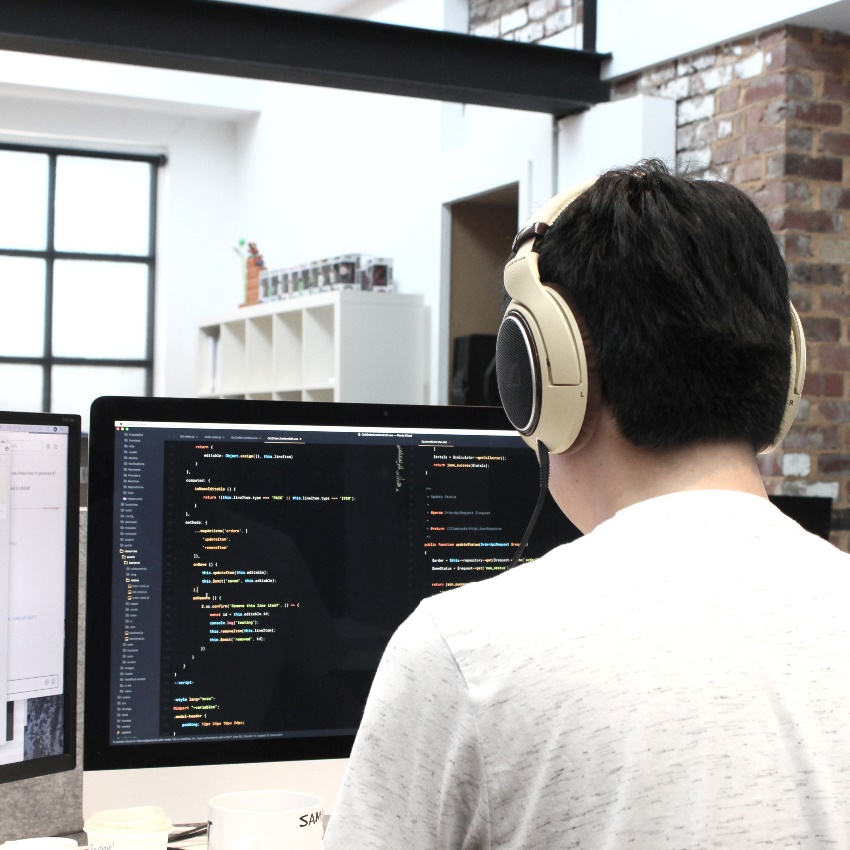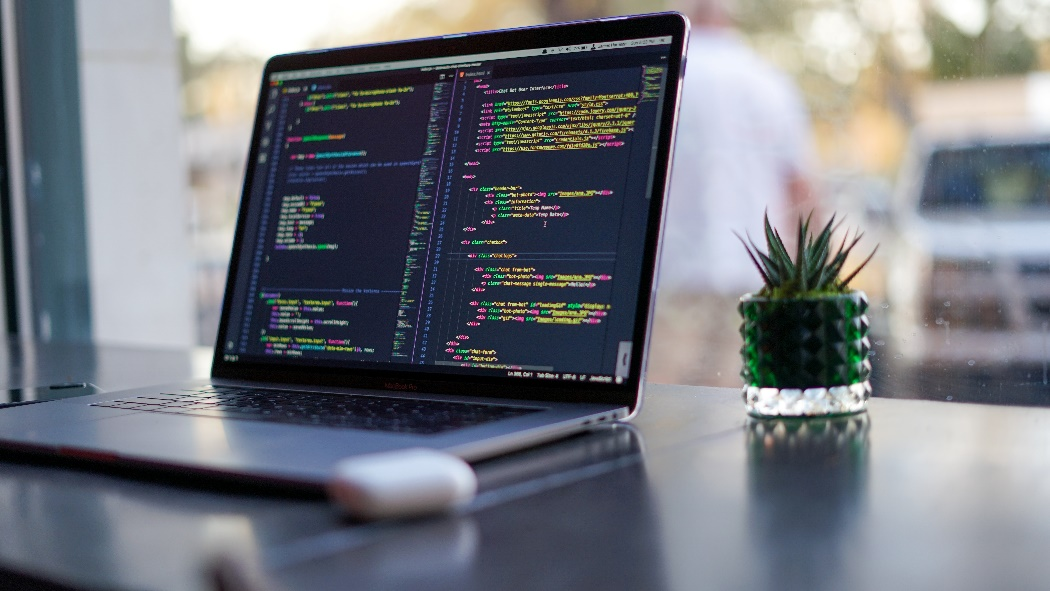Email Address: contact@softwareistic.com | Phone Number: (844) 970-3900
Email Address: contact@softwareistic.com | Phone Number: (844) 970-3900
The current era is digital, and with the accessibility of smartphones and internet connections, it’s necessary for businesses and services to meet their end-users with relevant applications. More people are using online services, using them for their daily operations as well as acquiring products through them. The biggest aspect behind this is how many people are now smartphone users.

Many would believe that your business not providing a mobile application would be considered a downside. The major concerns that business owners might have include the cost and time it takes to develop an application. In a nutshell, many will tell you that it’s not as much as losing out on customers in the long run that refuse to work with you as you don’t have the convenience of a mobile app. The pros certainly outweigh the cons, and making a mobile app might certainly take a lot less time than you’d anticipate.
Failing to plan is planning to fail. With the variety of application types and different niches, it’s more important to put ample time in the planning stage in order to have a concrete development cycle. Generally, the planning stage can take around 2 to 3 weeks. This number varies significantly depending on the size of the application with respect to the features you’ll be creating.
You also have to go through the various frameworks you have for application development, comparing their various pros and cons to decide on which option you should settle on. In this phase, the product owner and the development teams interact with each other, and it can be helpful for them if they’re not tech-savvy.
The business analysis stage takes a minimum of two weeks to three weeks. Many of the essential questions about the application are answered in this phase, and they are pivotal for the future steps in the development cycle. The various parameters for success, such as which market the app will be launched in, its potential market size, demographics of end-user, and potential competitors, are determined.
Much of the assessment is from a business perspective here rather than technical and emphasizes assessing the market and how the application can easily penetrate the space. With the increasing competition, this process requires its fair share of time to ensure that the USP of the application is fully realized and focused on. It will have a cascading effect through the lifecycle and might dictate the direction in which your plans go, depending on the information that you receive.
Once you’ve decided on the success criteria for the application, you can think about the development plan. Different projects require different development methods, and each has its pros and cons. The main objective is to assess what information you have and what’s missing to fully understand the scope of the project. You also need to work on creating objectives and timelines, which will allow you to provide all of the deliverables within their deadlines and complete the project within the agreed schedule.
While no actual development work begins in this phase, some of the initial considerations for the client, such as basic UI designs, color schemes based on client needs, and other graphical components, are considered. Many traditional development companies also produce various software development documents during this stage. This phase takes around 5 to 7 weeks.
UX Design focuses on the various interactions that the users will make with many of the assets on screen. Instead of focusing on the aesthetics and the layouts, the UX designer aims to make the process simplified, easy to learn, and recall with time. They’re aware of who the end-user will be, and what their goals and motivations are for using the application, and they head out to create a system that makes this process as convenient as possible. The UX design phase can take around 2 – 3 weeks.

Ideally, you want to create a design that gets most of the work done in fewer steps and takes little to no time to get familiar with and recall.UX designers are not UI designers, as they’re focused on most of the interactions, branching trees of operations around the application as users make any action and how to streamline them in the final product.
The UI design phase takes up a lot of time, but considering it represents a huge part of the final product, it should be prioritized. Considering all of the hard work done to determine UI, themes, and many of the elements and assets discussed during pre-development, all of those are developed. The whole phase consists of different processes, such as sketching, and wireframing to name a few, which allows the designers and developers to create a detailed design that’s not only functional but aesthetically pleasing while meeting validation criteria.
All of the stakeholders are heavily invested in the results of this process as it leads to functional components for the development work. Because of the varying screen sizes, different operating systems and devices that you’d be developing the application for, this phase generally takes up 3 to 4 weeks out of the schedule.
This is the most expensive and generally the most time-consuming part of the whole project, and much of the actionable work that’s presented to various stakeholders takes place. Development consists of backend and front-end development streams, and the two are generally done in parallel to avoid any overheads:

As more applications heavily center around large amounts of user data, it becomes necessary to have a fast and robust backend to ensure the best performance. During the backend development phase, developers work on the architecture, app server, and database for your application. As your application, server and database need to communicate in the most efficient manner possible, backend development can take a fair bit of time.If your application is a project that’s heavily reliant on the internet and user data, it will require a strong database with fast performing queries with proper protocols within the app for fast CRUD operations and updates on the screen.
Back-end development takes up 6 – 8 weeks, and since they heavily focus on user data, privacy, and other necessary factors that are vital to the success of your application, they shouldn’t be rushed.
All of the work done across the UI and UX design process comes into fruition as developers work on the front end, with the process spanning 6-8 weeks. The UI and UX teams, along with the designers, hand the front-end developers the wireframes, designs, and various assets to create the functional design of the application. As the userbase for most applications expands, it gets trickier to create a general application that ticks the boxes for most users.
Front-end development is crucial because it’s a huge indicator of the final application’s look and feel, which many users might turn towards or away from depending on how good or bad it is.The emphasis here isn’t entirely on aesthetics, as to how the various elements operate, how easy to learn and use the system is while being response depends heavily on the front-end as well.
Software testing is a crucial element of the process and should not be rushed. The QA team generally requires two weeks for the process, allowing them to go through the various aspects of the system to exhaustively test for any issues. The best software development companies aim for zero bugs in their final releases, which means that every instance is tested heavily to ensure the best results.
All of the features go through frequent phases of verification and validation testing. The testing process has many phases, and until the QA team is satisfied, the product is not greenlit for publishing. In some cases, companies will also follow this up with small community testing procedures where a closed community of potential users will be used to get feedback on the application. Once they’re happy with the results, then the project can finally go into production.
While many assume that most of the work is done here, a difficult process awaits when the application has to be launched. Both Google and Apple have certain criteria that developers must follow in order to publish the application. In the case of iOS applications, the procedure is fairly complicated and can take a few days.
The developers have to be careful about the whole process as there can be delays if the application gets rejected by either Apple or Google. Considering that the application needs to work with a variety of devices, including tablets, there are specific requirements that these validation phases have that developers need to meet. This process shouldn’t be rushed to prevent any extra overheads. It should be given at least a week for proper diligence.
Unfortunately, not all of the work is finished once the app is out in the market. There can be reports of any issues, which are fairly common in Android devices due to the sheer number of devices out there that can have issues with some applications. Similarly, a broad release provides more detailed feedback from the users, which is necessary to improve the application.
The developers might not take on any major overhaul in the application during this stage, but they will make some necessary quality of life improvements to keep the userbase satisfied. Generally, this stage takes up around 2 weeks until the deal is settled between both parties.
If you’re opting for native applications for both iOS and Android, the development process can take a lot more time, considering you need to develop codebases for both applications from scratch. While many of the assets and elements can always be shared to a good degree, the major issue is that you have to follow many of the protocols for each operating system independently when creating your final product.
The major issue comes from writing code in two different languages, which is a huge bottleneck in the process. For this reason, many people prefer using hybrid solutions like React Native or Flutter. Most of these applications share a huge chunk of the same codebase, which can do an excellent job of reducing the need to rewrite code, fast-forwarding the development cycle.
Depending on the scale of the application and the complexity of the task at hand, the overall time for development can increase significantly. Having a reliable development team can make the whole process a lot more streamlined and can get the job done with all deadlines met on time with the end-result meeting the needs of the users comfortably.
Having a talented development team with lots of experience will make this process much more convenient for you in the long run, essentially making it shorter will produce the best results possible. It’s especially handy if you don’t have tech-savvy individuals on your team to educate you on various aspects.
If you need a competent android or iOS app development agency providing Flutter App Development and React Native App Development , you can find the services you need with Softwareistic. We help businesses from various domains build their apps from the ground up or revamp existing functionalities. We also develop solutions for wearable devices.
With Sofwareistic, you can communicate your ambitions for your project with us, and we take care of the entire development process, whether you need an MVP or a full project.
Send us your details. We are here to answer your questions.